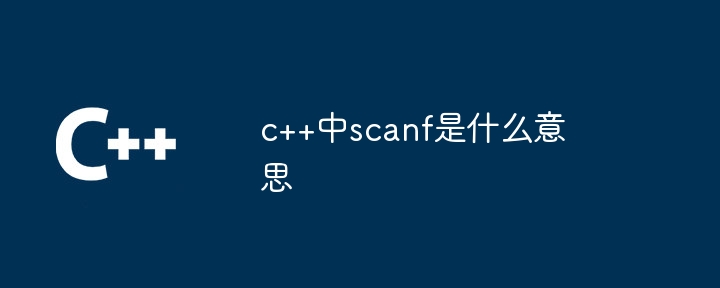
The scanf function is used to read formatted data from standard input. Its syntax is: int scanf(const char* format, ...). The function parameters include the format string format and the input variable address, which will store the read data in the specified variable. Returns the number of read data, and returns EOF when the end of file is encountered. Common format specifiers are %c (character), %d (integer), %f (floating point number), and %s (string).

The scanf function in C
The scanf function is used in the C standard library to read the format from the standard input function to transform data. It reads the input data and stores it in the specified variable.
Syntax:
int scanf(const char* format, ...);
Parameters:
Return value:
The scanf function returns the number of read data. If EOF (end of file) is encountered, EOF is returned.
Format specifier:
The format specifier specifies the format of the input data. Some common format specifiers include:
##Usage example:
int num;
char str[100];
scanf("%d %s", &num, str);Note:
The above is the detailed content of What does scanf mean in c++. For more information, please follow other related articles on the PHP Chinese website!
 What are the differences between c++ and c language
What are the differences between c++ and c language
 Recommended learning order for c++ and python
Recommended learning order for c++ and python
 Cost-effectiveness analysis of learning python and c++
Cost-effectiveness analysis of learning python and c++
 Is c language the same as c++?
Is c language the same as c++?
 Which is better to learn first, c language or c++?
Which is better to learn first, c language or c++?
 The difference and connection between c language and c++
The difference and connection between c language and c++
 C++ software Chinese change tutorial
C++ software Chinese change tutorial
 Cost-effectiveness analysis of learning python, java and c++
Cost-effectiveness analysis of learning python, java and c++




